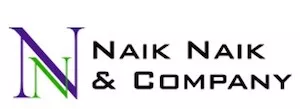Think of a simple apple with half of its bite taken off, a three-pointed star in a circle, or an "M" printed in yellow on a red backdrop, and you'll immediately recognise the brand. This is the power of logos. They help establish a brand's personality and make it instantly identifiable to consumers, which in turn fosters a sense of comfort and encourages repeat purchases. However, have you ever considered the fate of company logos in the event of a merger or acquisition?
What Are Mergers & Acquisitions?
When companies or their assets are combined, it is referred to as a merger or an acquisition (M&A). An acquisition occurs when one business buys out another. Whereas, when two or more businesses come together to establish a new legal entity, it is known as a merger. Mergers and acquisitions (M&A) can be funded using a mix of cash, stocks, and debt.
Fate Of Logos During M&A
A logo is an integral aspect of the negotiation and transition process during a merger or acquisition (M&A) since it represents the identity and market worth of the brand. What happens to these brands ultimately depends on the deal's specifics and the firms' long-term objectives. A few typical examples include:
- Logo Retention: The acquiring firm or the
newly formed entity may want to keep one or more of the original
logos in certain instances. Many companies do this to keep their
customers loyal, increase their market presence, and protect their
brand property. Each brand is then able to keep its identity and
reap the benefits of the merger.
For instance, when Facebook bought Instagram, both the logos were retained.
- Logo Renovation: Another option is to update
current logos so they represent the new company. Incorporating
features from both brands can necessitate minor adjustments or a
complete overhaul. This strategy aims to convey the brand's
development while simultaneously establishing a feeling of
continuity.
For example, as a result of the merger between United and Continental Airlines, the new logo incorporated aspects from both organisations; it kept United's name but used Continental's globe emblem.

- Logo Swapping: Sometimes, one company's
logo might be totally swapped out for the other's. This happens
when one brand is far more powerful or better fits in with the new
business plan. This situation frequently arises in mergers and
acquisitions when the purchasing company's name is highly
recognised.
For instance, After the merger between Chase Manhattan Bank and Bank One, the former kept its name and logo while the latter was phased out entirely. This was because Chase was more well-known and so more easily remembered.. - Logo Designing: A new logo may be created to symbolise the merged company in some mergers, particularly those that establish a new legal entity. When both brands are looking to start over or when they feel that neither logo fits the new company, they often use this strategy.
When Exxon and Mobil merged, the new emblem incorporated features from both companies into a single design, which is a well-known example.
![]()
Legality – Domestic & International
In the context of mergers and acquisitions (M&A), logos are
legally treated quite differently under local and foreign
circumstances. They are governed by Trademark Laws of each country
making them unique as per place. Understanding the intricacies of
the logo's trademark registration and validity in light of
potential mergers in India or abroad becomes paramount.
In India,
- To properly transfer these rights during an M&A, it is the responsibility of the purchasing company to update trademark registrations to reflect the new ownership. This prevents any third-party infringement over the logo, thus removing any hurdles in the subsequent merger and acquisitions.
- The transfer of logos should be subject to stringent due diligence procedures in domestic M&A negotiations to ensure its legitimacy and enforceability.
- All related intellectual property rights must be in good standing, and there must be no pending disputes.
- The logos must be registered in all applicable classes.
Internationally, - The registration, usage, and enforcement regulations of logos as per the Trademark Act vary among nations, making it essential to focus on the legal aspect during cross-border mergers and acquisitions.
- The Madrid Protocol and the TRIPS Agreement are two important international agreements that help to safeguard logo rights internationally. Companies participating in worldwide mergers and acquisitions can benefit from these accords since they make it easier to register and transfer trademarks in several jurisdictions.
- The transfer of logos should be subject to stringent due diligence procedures in cross border M&A negotiations as well to ensure its legitimacy and enforceability.
- There should be no active conflicts and all relevant intellectual property rights should be in good standing.
Conclusion
An important part of any merger or acquisition is deciding what happens to the logos of the merging or acquired companies. This decision will have an impact on how the public views the combined company. Legal, strategic, and consumer-related considerations must be carefully considered when dealing with logos, whether they are preserved, changed, replaced, or recreated. A seamless transition and the protection of significant brand assets necessitate an awareness of the legal framework controlling logo rights, whether in a domestic or international setting. Companies can protect their brand identity and ensure long-term success in the post-M&A market by taking a deliberate and thorough approach to logo maintenance
The content of this article is intended to provide a general guide to the subject matter. Specialist advice should be sought about your specific circumstances.


